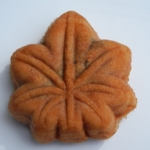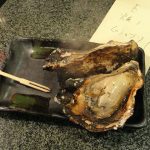
Under the Sea at Miyajima Aquarium in Hiroshima
Aug 30, 2023 By Jade Brischke
Hiroshima is famous for having access to both the mountains and the ocean and, as a result, has bountiful produce to eat as you enjoy the scenery. Miyajima Aquarium is...[ Click to read more ]

Looking for Snacks? Leaf it to Me!
Feb 24, 2022 By William Farrow
In Japanese, the word momiji usually refers to the leaves of the maple trees in Japan. A popular symbol representing autumn, it should come as no surprise to hear that the...[ Click to read more ]

Daisho-In Temple: The Alternative to Itsukushima Shrine on Miyajima
Nov 29, 2021 By Michael Stigall
While it may not be as famous or frequently photographed as Itsukushima Shrine, Daisho-In Temple on Miyajima is just as beautiful and absolutely worthy of a visit. It’s so beautiful...[ Click to read more ]

‘Jewels of the Sea’ Miyajima Oyster Festival near Hiroshima
Jan 23, 2020 By Jade Brischke
Although Hiroshima is famous for its oysters throughout the year, it is during winter, in the coldest month of February that they're at their best. Sure you can go to...[ Click to read more ]

Hiroshima`s Autumn Leaves
Oct 28, 2019 By Jade Brischke
Starting in mid September the "koyo front" slowly moves its bands of color south from Hokkaido to central and southern Japan and the end of November where it turns to...[ Click to read more ]

Aqua Net Ferry from Peace Park to Miyajima
Feb 25, 2019 By Matt Mangham
Two of the best things about Hiroshima are its rivers and its proximity to the UNESCO World Heritage Miyajima. Unfortunately, many visitors to the city take no more than a...[ Click to read more ]

Firewalking at Miyajima 2018
Oct 29, 2018 By Matt Mangham
Japan has a slew of fire rituals, the most famous of which being Kyoto’s famous Daimonji Festival. These festivals, leveraging ancient notions of purification and renewal, continue to draw people...[ Click to read more ]

Island Hopping on the Seto Inland Sea near Hiroshima
Mar 26, 2018 By Matt Mangham
If you find yourself in Hiroshima or the surrounding area for any length of time, you really should set aside a day or two to explore the Seto Inland Sea....[ Click to read more ]

Miyajima’s Daisho-in Temple near Hiroshima
Dec 22, 2017 By Matt Mangham
January is a wonderful month to make a trip to Miyajima. Whether you’re heading out early in the month for the year’s first ‘hatsumoude’ visit to the island’s World Heritage...[ Click to read more ]

Daisho-In Temple: the alternative to Itsukushima Shrine on Miyajima
Sep 13, 2017 By Jade Brischke
It may not be as famous as Itsukushima Shrine, but Daisho-In Temple on Miyajima is just as beautiful and to let you in on a secret, it’s actually my favourite....[ Click to read more ]
